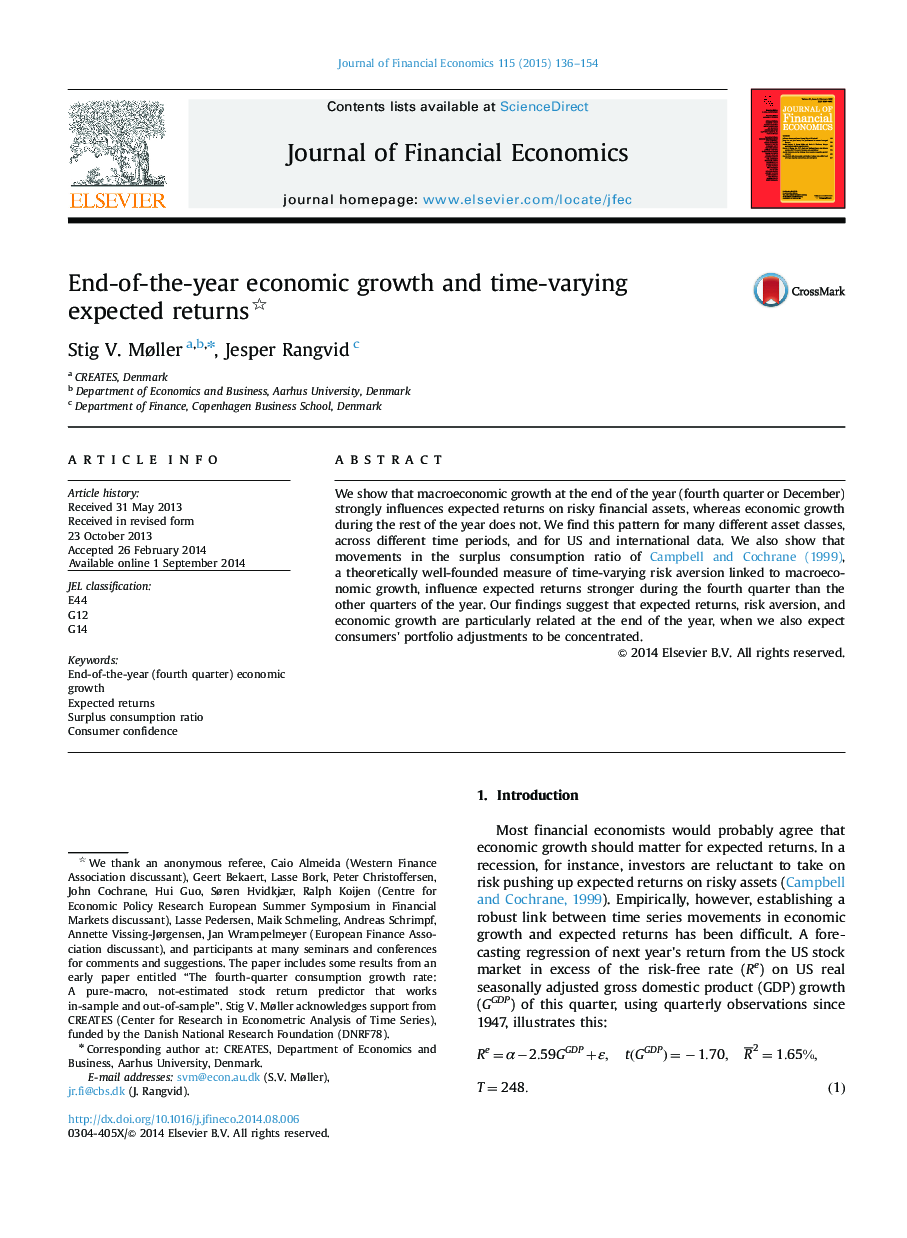| Article ID | Journal | Published Year | Pages | File Type |
|---|---|---|---|---|
| 959964 | Journal of Financial Economics | 2015 | 19 Pages |
We show that macroeconomic growth at the end of the year (fourth quarter or December) strongly influences expected returns on risky financial assets, whereas economic growth during the rest of the year does not. We find this pattern for many different asset classes, across different time periods, and for US and international data. We also show that movements in the surplus consumption ratio of Campbell and Cochrane (1999), a theoretically well-founded measure of time-varying risk aversion linked to macroeconomic growth, influence expected returns stronger during the fourth quarter than the other quarters of the year. Our findings suggest that expected returns, risk aversion, and economic growth are particularly related at the end of the year, when we also expect consumers׳ portfolio adjustments to be concentrated.
